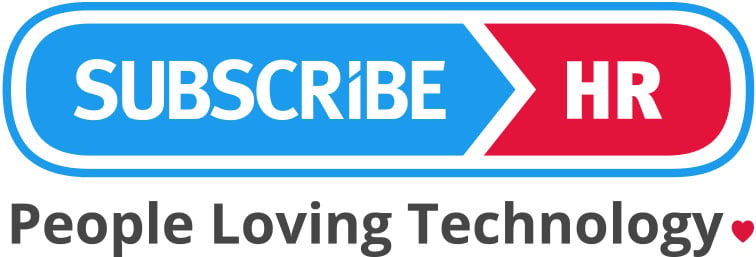Performance reviews have long been a staple of employee evaluation in companies. But now, the traditional annual or semi-annual performance appraisal is gaining a view as needing an update. A mix of both traditional and more regular catch-ups and check-ins is now becoming more widely used.
More modern methods like regular catch-ups and check-ins are getting more popular for their ability to provide timely, actionable feedback and support continuous development. Combining these with more traditional reviews is gaining more popularity because a combination will spread the workload across the year, taking the stress out of the performance review process and make it more accurate.
Join us as we compare the traditional performance review process with today’s catch-ups and check-ins, understanding how you can choose the options that suits your business, managers and the HR department. ⬇️

Why performance appraisals and reviews are changing
People like a mix of Modern and Traditional
Both employees and managers often find traditional performance reviews on their own stressful and unproductive. A CEB study highlighted that 95% of employees are dissatisfied with their company’s appraisal process, viewing it as inaccurate and irrelevant to their actual work. Similarly, 95% of managers are unhappy with these reviews, finding them inadequate for real performance improvement. Some times, creating heavy, review twice a year reviews, can mean burdens and bottlenecks. They are still very important, but capturing performance information more regularly, rolling these up into more traditional reviews can create more accurate and manageable employee appraisals.
They need Updating
Traditional appraisals may not be dynamic enough for technology-driven workplaces. Companies often require agile and immediate feedback systems instead of yearly evaluations. Providing feedback on employee performance just once or twice a year can prove ineffective in certain settings. Even if conducted infrequently, designing appraisals that resonate with employees' personal values and aligning them more frequently with business objectives can yield significant benefits, such as enhanced competitive edge, improved productivity, profitability, and better customer service, both internally and externally. Implementing flexible performance review and appraisal software that allows for customization and adaptation is crucial. As times evolve, so must the methods for updating your Performance Review Process.
Traditional Performance Reviews can be subjective
Traditional performance reviews often rely on subjective judgments, which can be biased and unfair. This subjectivity can demotivate employees and reduce the accuracy of evaluations. Metrics used in these reviews can be overly simplistic, failing to capture the complexity of modern roles, especially those involving creativity and problem-solving. Catch-ups and Check-ins can capture micro events and learnings which can be actioned easily by employees in real-time. This information can then be viewed in a more traditional performance review environment providing more accurate feedback.
Is a Competitive Environment best?
Performance appraisals if not considered and designed correctly, can create a competitive rather than collaborative environment, as employees may focus on achieving high ratings rather than genuine development. This can lead to a culture of box-ticking rather than meaningful growth and engagement.
➡️ As a result, many companies are combining traditional appraisals with more frequent and informal feedback sessions. For example, real-time 360 reviews, monthly catch-ups, and project debriefs combined with a more focus and shorter annual review, can provide continuous feedback that is more relevant and actionable. These methods encourage better communication, development, and alignment with organisational goals. But how?

Catch-ups and Check Ins: the Lowdown
Modern check-ins occur regularly, such as weekly, bi-weekly, or monthly. This ensures timely feedback, allowing employees to make immediate improvements and adjustments in real-time. They also offer microlearning opportunities, through mentoring.
Modern check-ins prioritise employee development. They allow for information and knowledge to be shared between people, in real circumstances. They emphasise future goals, skill development, and career aspirations rather than just evaluating past achievements and failures.
Regular check-ins lead to higher employee engagement. They create a supportive environment where employees feel valued and heard. This is particularly important in remote or hybrid work settings, where frequent feedback can significantly boost engagement. Continuous feedback allows for real-time course corrections which helps in identifying and addressing issues before they escalate, enhancing overall team productivity and performance.
This information can be stored and referenced if you choose to roll it up into a more traditional review session at some point.
With remote and flexible working now the norm, business need to connect people together using Flexible HR Software and Performance Management Software.
🚀 Find out more about modern performance reviews.
Personalised feedback
Modern performance management involves personalised, two-way conversations. Managers ask open-ended questions to understand employee needs and goals, encouraging a more collaborative and inclusive work culture
Technology integration
Effective performance check-ins often leverage performance management software and performance appraisal software. These tools help track progress, document feedback, and ensure follow-ups are carried out, making the process more structured and efficient. And rather than relying solely on quantitative metrics, modern check-ins consider qualitative aspects of performance. They recognise the complexities of different roles, especially those that require creativity and critical thinking.
🚀 Find out more about leveraging HR tech in performance management.
Employee wellbeing
Regular check-ins also address employee well-being. Managers discuss non-work-related topics, helping to build rapport and reduce the stress and anxiety often associated with traditional performance reviews.

Performance Reviews compared to Catch Ups
Frequency
- Traditional: Typically conducted annually, semi-annually or quarterly
- Modern: Occur more frequently, such as weekly, monthly, or quarterly, providing timely feedback and support. Capture knowledge and information for micro-learning and mentoring opportunities
Feedback Timing
- Traditional: Feedback is often retrospective, focusing on past performance and issues that may no longer be relevant
- Modern: Immediate and real-time feedback helps employees address issues promptly and continuously improve. Faster learning
Employee Experience
- Traditional: These reviews if not done well and not supported by real-time feedback can stressful and demotivating for employees, as they can often focusing on criticism rather than constructive feedback
- Modern: Designed to be more engaging and supportive, harboring a positive environment where employees feel valued and motivated
Manager’s Role
- Traditional: Managers act as evaluators and judges, which can create a hierarchical and sometimes adversarial relationship if employee values are not considered in-line with business values and objective. Talk the talk the individual understands
- Modern: Managers serve as coaches and mentors, supporting employee development and fostering a collaborative relationship
Impact on Performance
- Traditional: Emphasis is on past behaviour and accountability, which can hinder immediate improvements and proactive development if done on its own without support of catch-up and check-in information
- Modern: Focuses on current performance and development, enabling employees to set goals and achieve continuous growth
Adaptability and Agility
Modern check-ins allow companies to be more agile. They can quickly adapt to changes and address issues as they arise, unlike the static nature of annual reviews. This agility is crucial in today’s fast-paced business environment.
Employee Engagement
Regular check-ins have been shown to significantly improve employee engagement. A Gallup report highlighted that employees who receive regular feedback are more engaged and productive.
Development and Growth
Modern approaches emphasise personal and professional growth. Employees receive continuous support and guidance, helping them to develop new skills and improve existing ones. This contrasts with traditional reviews, which often focus more on performance metrics than on personal development.
Cultural Impact
Regular feedback encourages a culture of transparency and continuous improvement. Employees feel more connected to their work and organisation, which can lead to higher job satisfaction and retention rates.
Supporting Performance Metrics
Modern systems use diverse and dynamic metrics tailored to individual roles and goals, rather than the one-size-fits-all approach of traditional reviews. This customisation ensures that feedback is relevant and actionable.

Takeaway
✅ Regular check-ins ensure continuous feedback, allowing employees to adjust and improve in real-time
✅ Traditional Reviews allow for structured benchmarking for salary increases and rewards
✅ These sessions are more engaging and supportive, encouraging a positive work environment
✅ Managers act as mentors rather than evaluators, promoting a collaborative relationship
✅ Emphasis on current performance and future goals supports continuous growth and skill enhancement
✅ Frequent feedback boosts employee engagement and satisfaction, leading to higher productivity and retention rates
✅ Organisations can swiftly adapt to changes and address issues proactively, crucial in today’s fast-paced business environment
✅ Utilse performance management software for real-time feedback and continuous monitoring, streamlining the process
✅ Modern approaches emphasise the development of new skills and improvement of existing ones, contrasting with the performance metrics focus of traditional reviews
✅ Regular feedback fosters a culture of transparency and continuous improvement, enhancing job satisfaction and retention
✅ Modern systems use diverse and dynamic metrics tailored to individual roles and goals, ensuring relevant and actionable feedback
💡 Want more HR guidance? Check out the Subscribe-HR blog! We’ve got a huge bank of information when it comes to modern HR!
FAQs – Frequently asked questions
What are traditional performance appraisals?
Traditional performance appraisals are formal evaluations typically conducted annually, semi-annually or quarterly based on the start of employment or all employees being assessed at the same time. Jobs can have different types of reviews specific to them if run at the same time. They assess an employee’s performance over a set period, often focusing on past achievements and areas for improvement. These reviews are usually structured and involve a detailed assessment form filled out by the manager. Modern Catch-ups and Check-ins can support these by capturing the right information at the right time. Announcements and Acknowledgements can also be used to rewards employees in traditional reviews using accurate real-time data.
What are some examples of traditional performance appraisals?
Examples of traditional performance appraisals include the annual review, where an employee’s performance over the past year is evaluated, and the 360-degree review, which gathers feedback from peers, subordinates, and supervisors. These methods often involve standardised rating systems and formal documentation.
What are modern methods of performance appraisal?
Modern methods of performance appraisal include continuous feedback systems, regular check-ins, and real-time performance tracking. These methods focus on ongoing development, immediate feedback, and goal-setting to improve employee performance and engagement continuously. Review method updates and change need to be able to be done easily thus HR Technology that is flexible is key to the success of employee performance. Review, measure, reiterate, repeat.
What is the difference between modern appraisal and traditional appraisal?
The main difference is frequency and approach. Traditional appraisals are infrequent, typically annual, semi-annual or quarterly basis and are backward facing focused. Modern appraisals occur more frequently, such as weekly or monthly, and emphasise real-time feedback and continuous development. Traditional reviews should also have elements that look forward and can link to development and training if required.
What are the advantages of traditional performance appraisals?
Advantages include providing a structured and standardised way to evaluate employee performance, documenting performance for administrative purposes, and helping identify high performers for promotions or rewards. Can be set-up to look forward and back. Needs to be supported by Performance Review Software technology so that changes can be made quickly and cost effectively to ensure the right approach is delivered and if market conditions and business needs change, which they will, the HRtech can support this change with minimal impact.
What are the disadvantages of traditional performance appraisals?
Disadvantages include potential stress and demotivation for employees, delayed feedback that may not be relevant, subjectivity and bias in evaluations, and a focus on past performance rather than future development.
What are the benefits of modern performance management methods?
Benefits include timely and actionable feedback, increased employee engagement, continuous development and growth, a supportive and collaborative environment, and better alignment with organisational goals.
How do traditional and modern performance appraisals impact employee engagement?
Traditional appraisals can often demotivate employees due to their infrequency and focus on criticism. Modern methods, with their emphasis on continuous feedback and support, tend to enhance employee engagement and satisfaction.
What is the role of a manager in traditional vs. modern performance appraisals?
In traditional appraisals, managers act as evaluators and judges, which can create a hierarchical dynamic. In modern appraisals, managers serve as coaches and mentors, fostering a collaborative and supportive relationship with employees.
What are the different types of performance appraisals?
Types include traditional annual reviews, 360-degree reviews, continuous feedback systems, check-ins, project-based reviews, and peer reviews. Each type has its own methodology and focus.
How can performance review software help in modern performance management?
Performance review software can streamline the process of giving and receiving feedback, track progress in real-time, document performance discussions, and help managers and employees stay aligned on goals. This technology integration makes the performance management process more efficient and effective.
What is the purpose of performance reviews?
The purpose is to evaluate employee performance, provide feedback, identify areas for improvement, recognise achievements, set future goals, and support professional development. Performance reviews aim to enhance both individual and organisational performance.
How should managers approach performance reviews for employees?
Managers should approach reviews with a focus on constructive feedback, future development, and open communication. They should prepare thoroughly, use data to support their assessments, and create a supportive environment for discussing performance and goals.

